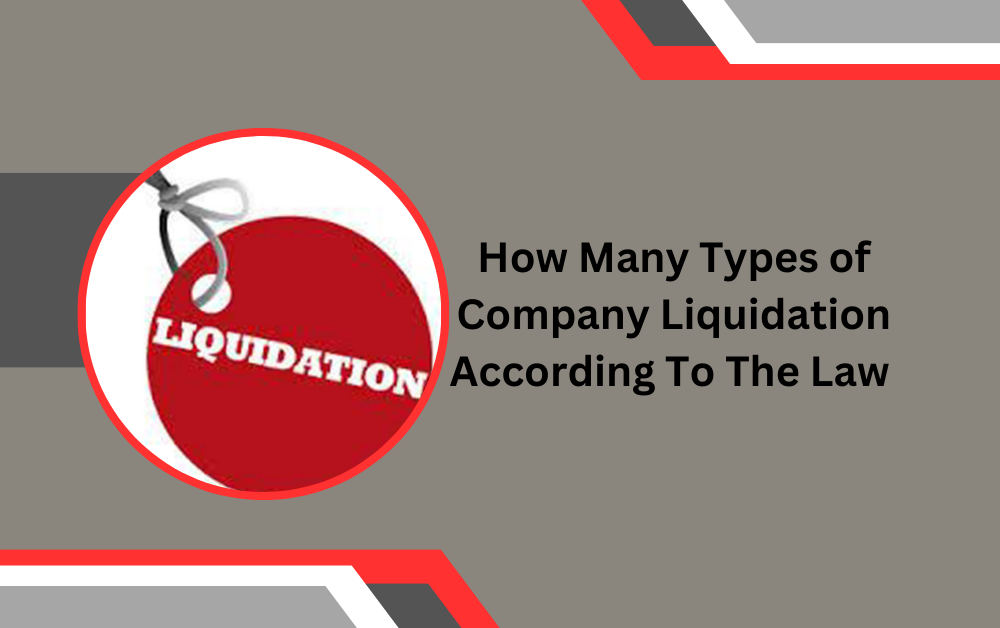Introduction
Liquidation signifies the end of a company’s operations, where its assets are sold off, and the proceeds are used to pay creditors. Any remaining funds are distributed among shareholders. Liquidation can occur for several reasons, including insolvency, strategic business decisions, or external pressures. Knowing the types of liquidation and the processes involved helps business owners and stakeholders make informed decisions and manage their expectations during this turbulent period. Understanding the nuances between different types of liquidation can help in selecting the most suitable path for winding down a business. This article provides a detailed overview of the primary types of company liquidation, shedding light on their unique characteristics and implications.
Company liquidation can be a complex and stressful process, often leading business owners to feel overwhelmed. Understanding the different types of liquidation is crucial for navigating this challenging time effectively. This article delves into the various types of Company Liquidation Services in DIFC, explaining their differences and providing insights into each process. By exploring these types, we aim to create curiosity and suspense, keeping readers engaged and informed about the critical aspects of liquidation.
Voluntary Liquidation
Members’ Voluntary Liquidation (MVL)
Members’ Voluntary Liquidation is initiated by the company’s shareholders when the company is solvent but the owners decide to wind up its operations. This type of liquidation is often part of a strategic decision to dissolve a company that is no longer needed or to distribute assets among shareholders.
The process begins with a declaration of solvency, where the directors swear that the company can pay its debts within a specified period, usually 12 months. An MVL is typically chosen when a company has completed its business purposes or when the owners wish to retire and liquidate their assets.
The main advantage of an MVL is that it allows for an orderly winding-up of the company’s affairs while ensuring that all creditors are paid in full. This type of liquidation often results in a more favorable outcome for shareholders, as any remaining assets are distributed to them after settling all debts.
Creditors’ Voluntary Liquidation (CVL)
Creditors’ Voluntary Liquidation occurs when the company is insolvent and unable to pay its debts. Unlike an MVL, a CVL is initiated by the company’s directors but requires the approval of creditors. The process starts with a meeting of the company’s directors to resolve to liquidate the company, followed by a creditors’ meeting where a liquidator is appointed.
In a CVL, the appointed liquidator takes control of the company’s assets, sells them, and distributes the proceeds among creditors. This type of liquidation is often seen as a way to manage insolvency in a structured manner, ensuring that creditors receive as much repayment as possible.
A CVL can be beneficial for both creditors and directors. For creditors, it ensures that the company’s assets are handled professionally and fairly. For directors, it provides a way to address insolvency issues proactively, potentially avoiding more severe consequences such as compulsory liquidation.
Compulsory Liquidation
Compulsory liquidation is initiated by a court order, typically following a petition by creditors, shareholders, or the company itself. This type of liquidation occurs when the company is insolvent and cannot pay its debts, and there is no voluntary agreement to liquidate.
The Petition Process
The process begins with a winding-up petition presented to the court. If the court finds the company to be insolvent, it issues a winding-up order. At this point, the company’s affairs are placed in the hands of an official receiver or a court-appointed liquidator.
Compulsory liquidation is often seen as a last resort, used when other attempts to resolve the company’s financial difficulties have failed. It can be a lengthy and costly process, involving extensive court proceedings and legal costs.
Role of the Official Receiver
The official receiver, usually a government official, takes immediate control of the company upon the issuance of the winding-up order. They are responsible for safeguarding the company’s assets, investigating the reasons for insolvency, and reporting on the conduct of the directors.
The liquidator’s role is to realize the company’s assets, distribute the proceeds to creditors, and dissolve the company. They also investigate the conduct of the directors to determine if any wrongful trading or fraudulent activity has occurred, which can result in legal actions against the directors.
Solvent vs. Insolvent Liquidation
Understanding the difference between solvent and insolvent liquidation is crucial for determining the appropriate liquidation process.
Solvent Liquidation
Solvent liquidation, such as an MVL, occurs when the company can pay its debts in full and is typically driven by strategic decisions rather than financial distress. This type of liquidation allows for a controlled and orderly winding-up process, often leading to a favorable outcome for shareholders.
Insolvent Liquidation
Insolvent liquidation, such as a CVL or compulsory liquidation, occurs when the company cannot meet its financial obligations. This type of liquidation focuses on selling the company’s assets to pay off creditors. The process is more complex and involves additional scrutiny to ensure that the rights of creditors are protected.
Infographic: Comparing Solvent and Insolvent Liquidation
| Aspect | Solvent Liquidation (MVL) | Insolvent Liquidation (CVL/Compulsory) |
|---|---|---|
| Initiation | Shareholders | Directors/Court |
| Financial Status | Able to pay debts | Unable to pay debts |
| Liquidator Appointment | By shareholders | By creditors or court |
| Objective | Orderly wind-up and asset distribution | Maximize repayment to creditors |
| Outcome for Shareholders | Usually favorable | Dependent on remaining assets |
| Director Conduct Review | Typically not scrutinized | Investigated for wrongful trading |
Special Cases and Hybrid Liquidations
Provisional Liquidation
Provisional liquidation can occur when there is a need to protect the company’s assets while a winding-up petition is being considered by the court. A provisional liquidator is appointed to safeguard the assets until the court makes a final decision.
Administrative Receivership
Administrative receivership involves the appointment of an administrative receiver by a secured creditor who holds a floating charge over the company’s assets. The receiver’s primary duty is to repay the secured creditor, often by selling the company’s assets.
Pre-Pack Administration
Pre-pack administration is a procedure where the sale of a company’s business and assets is arranged before the company enters formal administration. The sale is executed immediately upon the appointment of administrators, providing a swift resolution to insolvency issues.

Conclusion
Understanding the various types of company liquidation is crucial for business owners, creditors, and stakeholders. Each type of liquidation—whether voluntary or compulsory, solvent or insolvent—has unique characteristics and implications. By comprehending these differences, stakeholders can make informed decisions and manage the liquidation process more effectively.
From voluntary liquidations initiated by shareholders to compulsory liquidations enforced by court orders, each process has its own set of challenges and benefits. Solvent liquidations allow for an orderly wind-up of the company’s affairs, often leading to a favorable outcome for shareholders. In contrast, insolvent liquidations focus on maximizing repayment to creditors and involve additional scrutiny of the directors’ conduct.
Navigating the complexities of liquidation requires careful planning, professional guidance, and a clear understanding of the legal and financial landscape. By following best practices and seeking expert advice, business owners can ensure a fair and transparent liquidation process that protects the interests of all parties involved. This comprehensive guide aims to shed light on the intricacies of company liquidation, helping readers understand and manage this critical business process with confidence and clarity.
Note :- To Read More Articles Visit on- technewsideas


